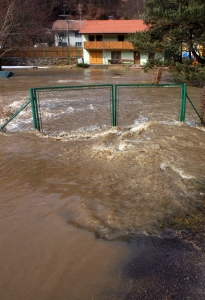Home and Auto Insurance Options
 When it comes to home and auto insurance, you have many options to choose from, making no one’s policy the same as anyone else’s. This is good because you can easily customize a policy to the particular needs of you and your family.
When it comes to home and auto insurance, you have many options to choose from, making no one’s policy the same as anyone else’s. This is good because you can easily customize a policy to the particular needs of you and your family.
Start by getting several FREE quotes for auto insurance just by typing your ZIP into the box on this page!
Additionally, many insurance companies sell both auto and home insurance. Not only does this simplify the process, but it can also save you money.
Homeowners Insurance: Primary Coverage
There are four primary parts to a typical homeowner insurance policy. With some of these, you may have some options, while others are dictated by the value of your home. Unlike auto insurance, homeowner’s insurance is not typically required by law. However, your mortgage company will require it to protect their investment.
Coverage A is the part that will repay to rebuild your home if it is destroyed by a covered event. It should only cover the cost of the dwelling itself, not the land, says USA.gov. Usually the insurance company asks many questions about the size and construction of the home to determine these costs, though at times they will send an appraiser or ask for photos.
USA.gov also strongly suggests getting a replacement value policy rather than an actual cash value one. The first will provide the money to rebuild the home exactly as it was. ACV policies only provide the amount the property was worth on the market at the time.
Because the real estate market fluctuates so much, you could really lose out if you choose a cheaper ACV policy.
Coverage B of a homeowner’s policy covers other structures on the policy besides the home itself. While this typically excludes any building that is a used for a business, it does include things like a detached garage, workshop, barn, etc. This part is usually set between 10 and 20% of Coverage A’s value.
 Coverage C pays for replacement of your personal contents. For a total loss, most policies have a value of around half of Coverage A’s value, though this part is one that can easily customized to your needs. If you have a lot of expensive furniture, ask for 70% or even 80% of Coverage A’s value.
Coverage C pays for replacement of your personal contents. For a total loss, most policies have a value of around half of Coverage A’s value, though this part is one that can easily customized to your needs. If you have a lot of expensive furniture, ask for 70% or even 80% of Coverage A’s value.
Coverage C also usually has additional clauses for particular items. For example, there might be a clause for an additional $5,000 to cover electronic equipment. You can also get additional coverage for jewelry, furs, or cash in the home.
The final part, Coverage D, is called the Loss of Use part. It provides funds to rent a place to live while your home is being repaired or rebuilt after a covered loss. If you are losing rental income while it is being rebuilt, this portion also reimburses the income lost during this time.
Homeowners Insurance: Additional Coverage
The other primary part of a homeowner’s policy is liability. While we typically associate liability insurance with auto insurance, homeowner’s policies have it too. It covers the same type of thing that car insurance liability does. It will cover the medical bills of anyone who is injured at your home.
For example, let’s say you have a guest over who falls off your porch and breaks his ankle. He can file a claim against your homeowner’s insurance to cover the ER visit and any follow-up doctor’s bills.
There is other additional coverage available on some policies, many of which are optional. These include things like debris removal or fire department charges. You can even get riders that cover you in case of identity theft.
One very useful rider to get, if your policy doesn’t already include it, is to extend your personal property coverage in Coverage C to property not on your premises. This would cover items stolen out of your car or stored in a storage facility.
Homeowners Insurance: Exclusions
Homeowner’s policies are contacts between you, the homeowner, and the insurance company. You agree to pay a certain amount and they agree to cover certain losses. The types of losses they cover are specifically spelled out.
The most common homeowner’s policy, called an HO2, spells out the 17 different events that are covered under the policy. While you may think this covers all situations, it does not.
The policy also details the events, which are not covered under this policy. The most problematic is floods. While most policies do cover flood damage due to an unexpected pipe bursting, it will not cover weather related flooding, including hurricanes. For this, you must buy flood insurance. The federal government offers this under the National Flood Insurance Program.
In addition, most policies do not cover damage due to earthquakes, soil expansion, landslides, war, nuclear explosions, termite damage, or leaky foundations. You might be able to purchase an extra rider to cover some of these, but others won’t be covered. Thus, it’s always a good idea to read over your policy to see exactly what your vulnerabilities are.
Free Car Insurance Comparison
Compare Quotes From Top Companies and Save
Secured with SHA-256 Encryption
Auto Insurance: Required by the State
When it comes to auto insurance, you probably have more options than you do with homeowner’s insurance. However, if you own a car, the state does require you to have certain levels of insurance.
 Liability insurance is the most important. It covers any repairs needed to the other car as well as for any medical attention the people in the car might need. Each state sets its own required level, but you can choose a higher level. In fact, the folks at SmartMoney suggest raising it to the 100/300/100 level.
Liability insurance is the most important. It covers any repairs needed to the other car as well as for any medical attention the people in the car might need. Each state sets its own required level, but you can choose a higher level. In fact, the folks at SmartMoney suggest raising it to the 100/300/100 level.
Some states also require you to carry uninsured/underinsured motorist coverage. This policy pays for your car repairs if the person who hit you doesn’t have insurance, doesn’t have enough to cover it, or flees the scene of the accident. In cases where it isn’t mandated, it’s still a smart addition to the policy, says SmartMoney, since there are so many uninsured drivers across the country.
You could file this under your collision policy. But if you exercise this option, you are opening yourself up to a rate hike. Claims against collision insurance usually indicate fault.
A few states also require you to carry some sort of medical coverage on your policy. There are two different types. Medical payments cover up medical expenses to a certain amount (usually in increments of $5,000). Personal injury protection covers medical expenses as well as pays for funeral costs and even house help while you recover.
 If you aren’t required to have these, this is an option to consider. Many people don’t pay for this because they already have health insurance and life insurance that covers the same things. So carefully evaluate the cost of PIP as well as the coverage you already have to see if you need this option.
If you aren’t required to have these, this is an option to consider. Many people don’t pay for this because they already have health insurance and life insurance that covers the same things. So carefully evaluate the cost of PIP as well as the coverage you already have to see if you need this option.
For others who have health insurance with a high deductible, it makes more sense to pay the extra money for PIP than to come up with thousands of dollars out-of-pocket before their health insurance will pay for anything.
Auto Insurance: Optional Coverage
 As we just said, in states where uninsured motorist and PIP aren’t required by law, they are still optional. However, there are other parts of an auto policy that are purely optional.
As we just said, in states where uninsured motorist and PIP aren’t required by law, they are still optional. However, there are other parts of an auto policy that are purely optional.
The biggest of these is comprehensive and collision. If you have a car loan, these aren’t really optional for you, as the terms of the loan require you to have these until your loan is paid off. At that point, you have the option of continuing this coverage or dropping it.
Just be aware that, while dropping comp and collision will save you a lot of money on your premium, you’ll be left with the entire financial responsibility if it needs to be repaired or replaced due to an accident you cause.
Collision covers the car if it is in an accident in which you are at fault. Comprehensive covers damage from events not related to a traffic accident, such as fire, theft, vandalism, or storms.
There additional riders you can add to the policy as well, such as a towing package or for a rental car if your car is in the shop. In some parts of the country, you can also add a glass coverage clause that will cover you should a rock hit your windshield.
Options that Save Money
There are various options you can choose to add or not to add that can help save you money on your auto policy. One option you have complete control over is how much your deductible is set at for both your homeowner’s insurance and auto policy. The higher you are willing to set the deductible, the lower your premium will be.
For auto insurance, raise the deductible to $500 or preferably, $1,000. This only applies to the comprehensive and collision parts of your insurance policy. You don’t have to pay a deductible on liability claims.
On your homeowner’s policy, set the deductible at $1,000 or 1% to really lower your premium. Keep in mind that there may be separate deductibles for certain clauses on the policy, like glass replacement or for theft of valuables. Always read the policy to be sure.
 See if setting up automatic payments can save you any money. If you have a mortgage, often your insurance costs are collected with the mortgage payment and stored in escrow until they are due. If yours doesn’t, see if you can get a discount for setting this up. Some also give a discount on auto insurance if you allow the company to automatically withdraw the payment from your bank account each month.
See if setting up automatic payments can save you any money. If you have a mortgage, often your insurance costs are collected with the mortgage payment and stored in escrow until they are due. If yours doesn’t, see if you can get a discount for setting this up. Some also give a discount on auto insurance if you allow the company to automatically withdraw the payment from your bank account each month.
Another easy way to save money on both is by opting to buy both policies from the same insurer, says the Federal Citizen Information Center. You’ll usually reap a fairly large discount on both policies by purchasing them from the same company. So when you are getting quotes for one, always get a quote for the other as well. This will maximize your savings without affecting your coverage.
Get several quotes for auto insurance right now when you click here and put your ZIP in the FREE box provided!
